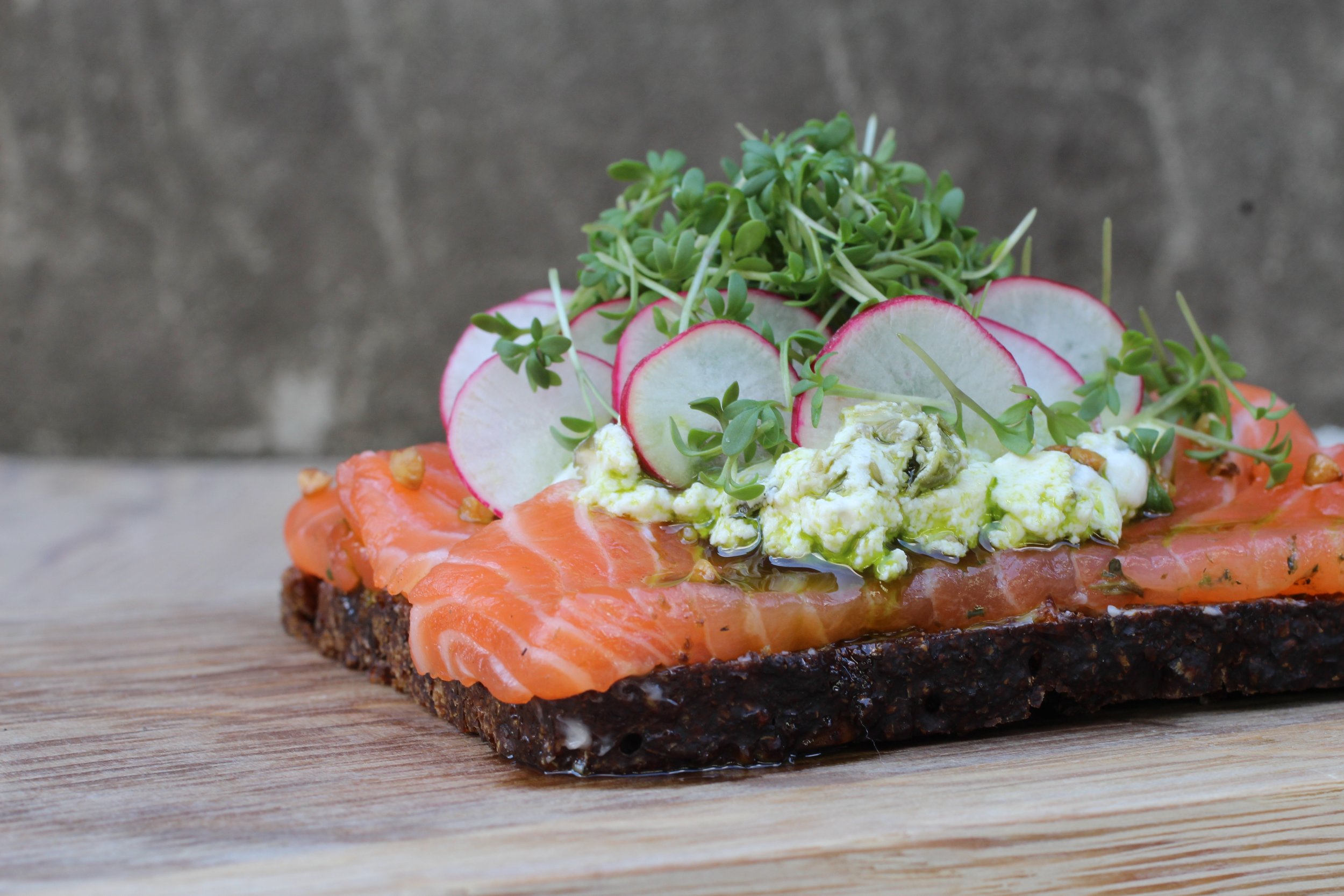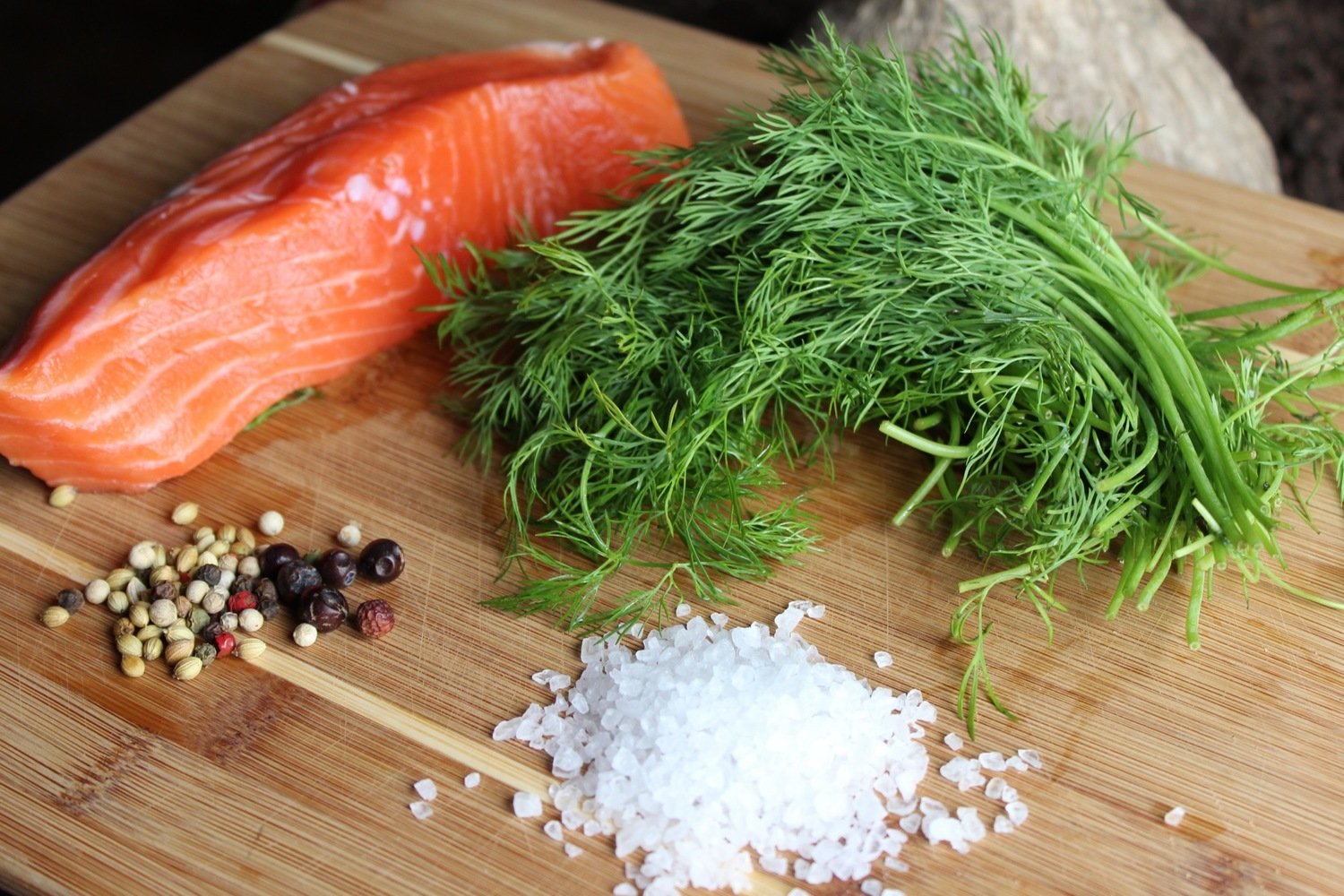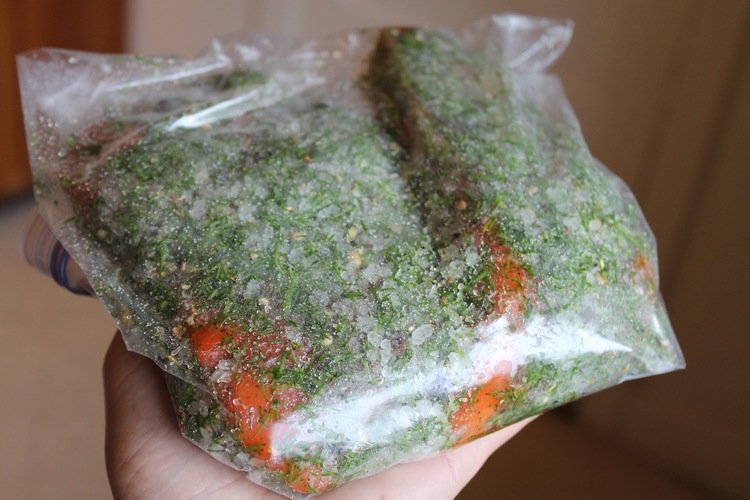Gravlax with Dill and Peppercorn
Like panna cotta and aioli, gravlax is one of those intimidating-to-make foods that are, in actuality, incredibly easy. The most important thing to remember is to stop the curing process at the right time or your salmon will become overly salty and stiff. I learned this the hard way a few times, but luckily the stiff and salty version is still tasty when used as a condiment in omelettes and rice bowls. Thus, never fear - even if you mess up, your salmony goodness will still be appreciated.
When cured to just the right level however, gravlax reaches an ethereal luxuriousness that both impresses friends and is incredibly cheaper than the store-bought version. Everyone will be wondering how you did it and you'll be wondering why you ever eat gravlax that aren't home-cured.
Curing is a generic term that can mean anything from drying apple slices to smoking pork belly for bacon - essentially, preserving a food by altering its ingredients. Gravlax, which is a Scandinavian type of lightly cured fish, uses sugar and salt to draw water from the fish and create an inhospitable environment for microbes. This both (slightly) preserves the fish and changes the flavor and textural properties. What is incredible about humans is that so many of the processes we figured out to survive (food preservation by adding salt being one of them) resulted in foods that we now cherish. A lot of the most culturally definitive foods, from fish sauce to cheese, were originally created out of necessity, but are now valued for their gastronomy and cultural significance.
Pink peppercorn
Although no longer a necessity, gravlax is one of those cured foods that will endure because it's so darn delightful. When curing fish, it's important to have the right about of sugar, salt, and time, but beyond that the herb/spice pairing is up to you. I have made gravlax with fresh dill, as is outlined in the recipe below, but I have also used dry dill in a pinch or even other combinations of herbs and spices (for example, coriander and sweet fennel fronds), all with pleasant results. Nothing really beats the classic fresh dill, white pepper, and fennel seed combination however! the below recipe makes enough for about 12 servings as an appetizer or on a bagel, but it can be adapted according to needs (more fish will require a longer curing time). As gravlax is only lightly cured and no heat is involved, the fish is only preserved for about 5 days after the curing process. This recipe uses a ratio of 1 part sugar to 1 part salt, but you can play around with it to get it to your liking. You can also experiment with different sugars, such as turbinado or brown. This is a more classic version with granulated sugar and dill. Makes 12 ounces/4-6 servings, but can be expanded as needed.
50 grams (1.75 ounces) fine or medium grain sea salt or kosher salt
50 grams (1.75 ounces) granulated sugar
15 grams (0.5 ounce) pink or white whole peppercorn, crushed with mortar and pestle (optional)
30 grams (1 ounce, about 1/2 bunch) fresh dill, chopped
0.75 pounds fresh salmon fillet, with skin
Blend salt, sugar, peppercorn, and dill in large bowl. Rub mixture evenly all over both sides of the fish and press into the surface slightly so it sticks.
Cover the fish coated in the sugar-salt-dill mixture in plastic wrap and place in glass or ceramic baking dish (do not use metal unless you line it with plastic or parchment) or, alternatively, put everything into a large ziplock bag. Weigh down the fish to express moisture as it cures. Some items that can be used include another smaller baking dish or jars filled with liquid.
Salmon with salt and herbs for curing.
Refrigerate the salmon for 48 hours. At 24 hours, flip the fish and weigh down again. Once curing is finished, rinse the salmon and -delicately- slice away the skin. Gravlax can be stored in the refrigerator for up to 3 weeks wrapped in parchment paper or plastic. Mine never lasts that long however!
To serve, slice the fish thinly and use as an appetizer atop rye bread/crackers or cucumber with crème fraîche, on the classic bagels and cream cheese, or in a number of other creative ways, such as the smørrebrød (buttered bread with toppings) you see below!
Smørrebrøod - open faced rye with gravlax.





